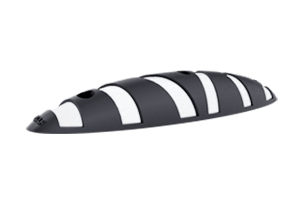| PROJECT NAME: |
Reform of Avenida Diagonal |
| CITY: |
Barcelona |
| LOCATION: |
Avenida Diagonal |
| DATE OF INSTALLATION: |
April 2015 |
Avenida Diagonal is one of the main arteries of the city of Barcelona, laid out in the Plan Cerdà. It crosses the city along 11 kilometres between Ronda de Dalt and the Fòrum area.
Project requirements and objectives.
The biggest problems on the avenue were related to the overcrowding of private motor vehicles and the fact that pedestrians and bicycles did not have enough space.
The configuration of the avenue was as follows:
- A central roadway with three lanes of traffic in each direction and one bus lane in each direction.
- Two lateral roadways with two lanes each.
- Two lateral pavements and two boulevards.
The reform’s objectives for the section between Plaza Francesc Macià and Paseo de Gracia five years ago were as follows:
- To widen the pavements to increase safety and accessibility for pedestrians.
- To increase the use of bicycles.
- To make the use of public transport more convenient.
- To revitalise the avenue as a commercial hub.
The proposed solution.
The reform led to enlarging the pavements to a width of 7 metres, creating motorcycle parking on the roadway, increasing the available space at bus stops and implementing two one-way cycle lanes on the lateral roadways.
 The Zebra® 9 cycle lane separator was used for segregating the cycle lanes. It was installed with a 1.3-metre separation between each unit.
The Zebra® 9 cycle lane separator was used for segregating the cycle lanes. It was installed with a 1.3-metre separation between each unit.
The Zebra® separator, installed in more than a hundred cities around the world, improves road safety and road user mobility.
This product line features three models that vary in height: Zebra® 13 (13 cm), Zebra® 9 (9 cm) and Zebra® 5 (5 cm).

